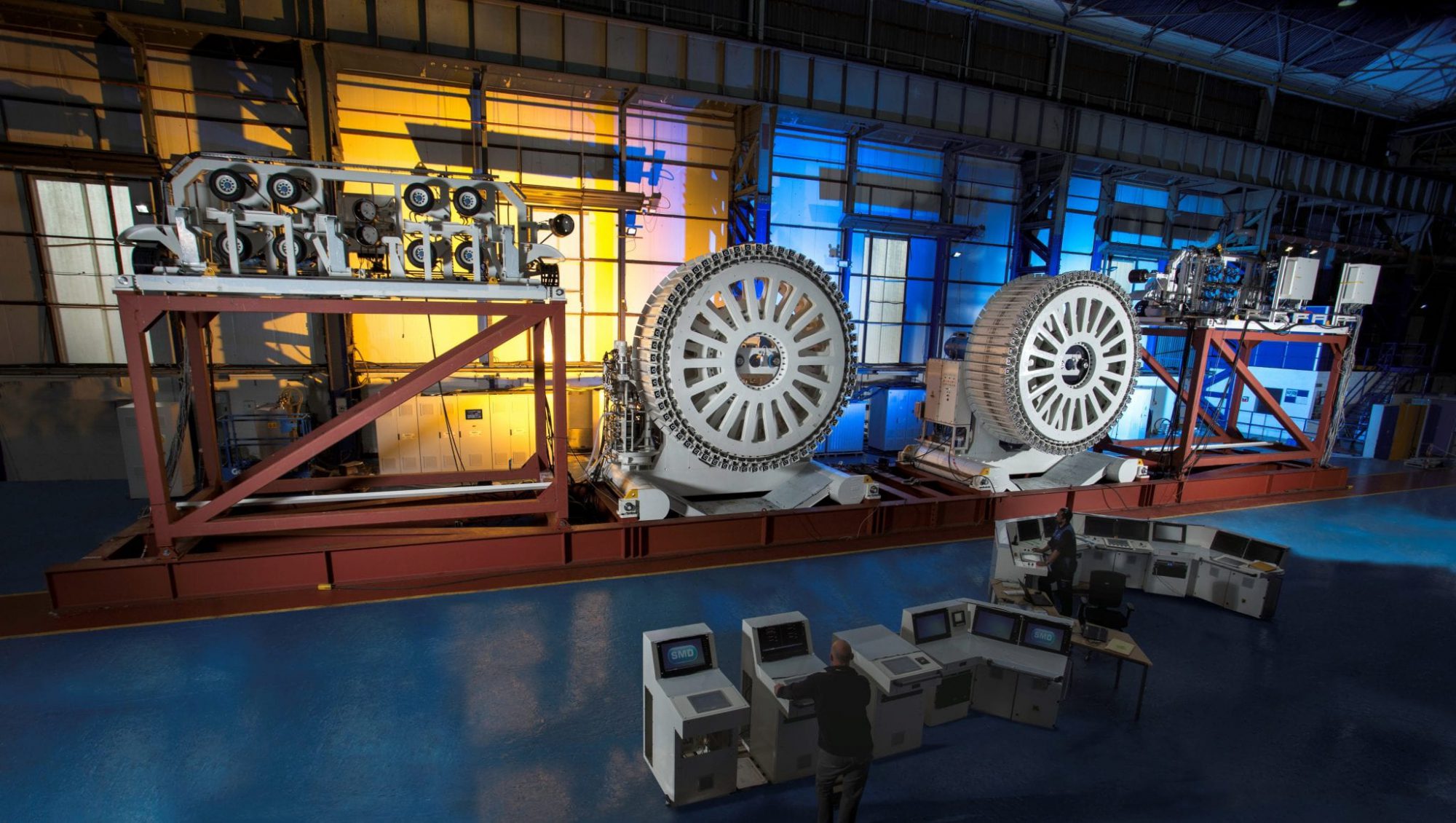It’s all about the cable!
When the SS Great Eastern laid the first successful transatlantic cables it used a drum-wheel with four turns of cable. For the cable to enter and exit at the same positions it had to be fleeted, with the coil pushed sideways by a “knife”. 150 years later and that same layout is still widely used. The engineer of the Great Eastern hadn’t invented the concept; he was vastly improving the simpler rope windlass drums, including knives, familiar to old time sailors.
The drum is still the best way to hold a cable load but the knife pushing on the side is always an undesirable high side load contact – something that wears grooves – and when objects like repeaters and joints arrive, it is a skilled task to manipulate the coils and knife so the object can pass through cleanly.
Telecoms cables have become remarkably more resilient since those days but the gentler the cable handling during deployment, the lower the risk of an in-service failure. Our ever more digital lives depend on the quality of those cables and how they are laid.
SMD has supplied linear cable engines of up to twenty wheel pairs which are, of course, knife-free – but few ships can afford the length of deck space required. Linear engines also only work on the cable sheath which can limit the ultimate grip compared to drums. SMD has also supplied plain drum tensioners with knives where that was the client preference or budget but has always looked for better solutions.
The self-fleeting challenge
In the 1980s there were several industry attempts to develop a self-fleeting cable tensioner that did not need knives, a drum where the cable would simply enter and exit in a continuous stable running spiral. One of those systems had a series of transverse conveyors. There have also been modified knife concepts like fleeting rings.
A particularly interesting concept to SMD was a stave drum, where the surface of the drum is overlaid with a number of staves almost all gently moving to fleet the cable across the surface, counteracting the natural action of the cable to wind to the side of the drum. At the same time, a small number of staves are rapidly resetting in the opposite direction – all this being driven by a cam mechanism. However, the challenges of a cam and stave mechanism that can easily slide laterally while resisting high, unbalanced, radial and circumferential loads should not be underestimated – especially when that mechanism that has to operate continuously for months at a time in a harsh environment.
SMD accepted that challenge and as a first exercise built an ROV umbilical pre-tensioner which proved the mechanism – it is still in factory service today. SMD’s engineers realised that driving the fleeting mechanism independently could deliver other cable manipulations, especially for passing objects. The experience was applied to a cable drum solution that equipped three ships in the early 2000s. The new-build cable lay vessel market went quiet for many years. Then, in 2017, recognising the improving demand for telecoms cable lay and other related applications, SMD completely re-engineered the product as a high precision production item with state-of-art variable speed drive controls.
The first pair of new cable engines was supplied to KCS (Kokusai Cable Ship Co.) in July 2018. A repeat purchase for them – they also operated first generation machines.
A Mesmerising Sight
To see a 4m diameter, 40 tonne capacity drum cable engine rotating at high speed with the horizontal staves all moving in a subtle wave motion, is mesmerising. The cable sits in a gentle spiral around the drum, rather like a standing wave, and all the while the cable is arriving and departing at speed. Couple that with a fast reacting electrical drive for constant tension control and it makes for a system that gives the cable the gentlest transition from storage tank to seabed.
Cable drums are based on the classic “capstan equation”, where the drum tension capacity TD is given by:
TD = THB eμΦ
and
THB = Holdback Tension
μ = friction
Φ = number of turns (in radians)
The cable friction is usually just a given. Holdback tension and number of turns are the only factors that can be practically adjusted. The initial holdback is provided by a short (4-wheel pair) linear cable engine. A 50:1 multiplication of the holdback is easy to achieve with a few turns on the drum. The linear engine, as well as providing the holdback tension, also controls the cable entry on the drum and there is an adjustable guide on the other side for running in reverse when recovering a cable.
The lay tension resistance generated by the drum is dissipated in heat somewhere (the Great Eastern had wrought iron band brakes with wooden block shoes in a water bath). The generated power, from load handling by electric drive, can potentially be fed back to the ship but due to risks of power distortion most customers prefer to dissipate it into the resistor bank as heating.
Passing Joints and Repeaters
Joints and repeaters are another area of potential risk for lay operations and cable integrity. They are large objects relative to the cable and giving them the least stress as they pass from storage tank to sea significantly reduces the risk of something going wrong, either to themselves or to the adjacent cable wraps. Ideally the joints and repeaters should pass around the drum without touching the other cable wraps.
This is something that the self-fleeting drum can do very well because the cam mechanism can operate at different speeds to the drum. This can increase or decrease the fleeting effect – the coils can be as wide or as narrow as the user desires within the limits of the drum width. Also, if the cam ring rotates at the same speed and direction as the drum, then there is no fleeting effect and the net effect is a plain drum. Using a combination of these effects and moving the linear engine can set up an ideal spacing suitable for a repeater arrival. When the repeater arrives, the drum can stop fleeting and the repeater pass around a plain drum without landing on any coils. The whole process can take place without pause to the lay.
New Applications
In deep sea lift operations, the self-weight of steel ropes negates their lift capacity at depth. Aramid type fibre ropes have been seen as the answer as they have low weight in water and excellent net lift capacity even at ultra-depths. However, fibre ropes do not hold their shape when under high tension on a multi-layered winch drum. Introducing a self-fleeting cable drum tensioner may be the answer as the main rope can then be reeled on a low tension storage drum.
Analogies with the transatlantic cable lay can be a bit tenuous now. Nonetheless, it is surprising how many things they got right on those first lays. However, the wisdom of putting the cable through the least possible handling risk always remains true and self-fleeting drums can certainly help to do that.


